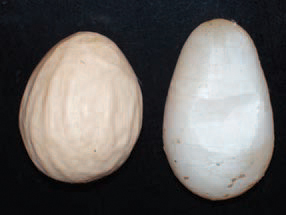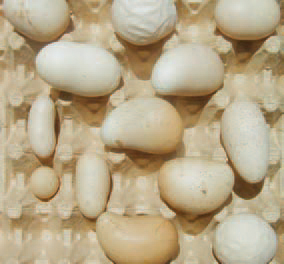|
Diseases of Poultry
By Ivan Dinev, DVM, PhD
|
EGG DROP SYNDROME -1976



209.210.211The egg drop syndrome - 1976 (EDS 76) is an infectious disease in layer hens manifested by a quick drop in egg production, failure to reach peak production, irregularly shaped eggs, soft-shelled or shell-less eggs and depigmentation. The aetiological agent is an adenovirus of group III. The horizontal transmission occurs slowly in battery systems and rapidly in floor housing systems. The first sign is the loss of egg pigmentation, rapidly followed by the appearance of soft-shelled, shell-less of deformed-shell eggs. If defective eggs are discarded, the remaining ones have no problem with fertilization and hatching. The drop could be sudden or prolonged. Usually, it lasts for 4-10 weeks and the egg production is reduced by about 40%. Apart the inactive ovaries and oviduct atrophy, other lesions are not discovered. The replication of the virus in epithelial cells of oviduct glands results in severe inflammatory and dystrophic changes in the mucous coat. The appearance of eggs with impaired quality and the dropped egg production are suggestive for EDS 76. The diagnosis is supported by some serological studies and is confirmed after isolation and identification of the virus. In many instances, no antibodies are detected in infected flocks until egg production approaches levels between 50% and peak production.






